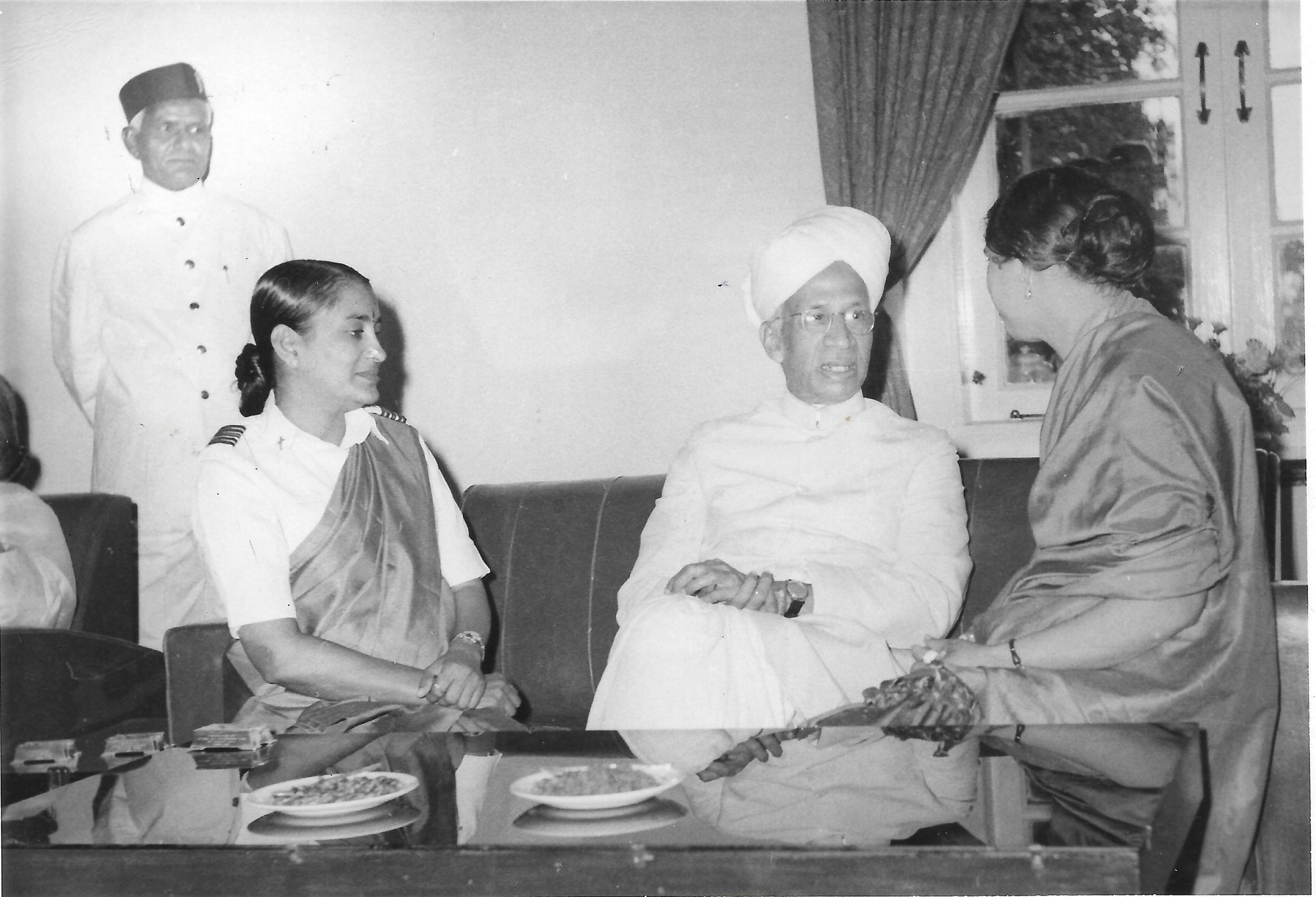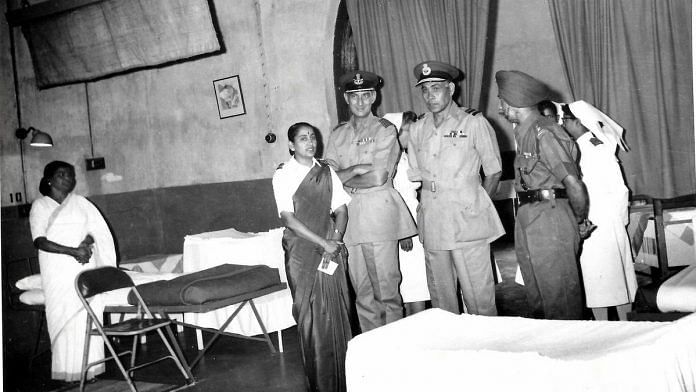Bengaluru: Wing Commander (retd) Vijayalakshmi Ramanan, the first woman officer of the Indian Air Force (IAF), had more than one ‘first’ to her credit. She was not only the first woman to wear saree as uniform, she also designed the uniform.
Wing Commander (retd) Ramanan died Sunday (18 October) at the age of 96 in Bengaluru. Her ashes were immersed in the Cauvery river near Srirangapatna Tuesday by her family.
S.V.L. Narayan, her son-in-law, told ThePrint that Ramanan had developed health complications in the past 10 days and was shifted to the IAF’s Command Hospital.
“She passed away peacefully Sunday night. She was very active till the very end. Days before she died, Ramanan had even given a handwritten note to her doctor,” Narayan said.
Born on 27 February 1924 , Ramanan did her MBBS from the Madras Medical College in 1943 and was named the best outgoing student in 1948. She was also awarded the Balfour Memorial Medal for Medicine and Prize for Surgery by the Madras University.
Before being commissioned into the Army Medical Corps on 22 August 1955, she completed her MD in obstetrics and gynaecology. Ramanan was later moved to the IAF, and she became the first woman officer to be inducted under the force’s Short Service Commission.
In a 2018 interview to the Devi Project, a documentary film company, Ramanan had said, “For quite some years, I was the only lady officer in the air force. There may have been only a dozen women officers in the army and navy together. Initially, I was scared to work with men, but I was brave and thought to myself, I could face anything.”
While her father T.D. Narayana Iyer, a World War I veteran, inspired her to serve the country, it was her husband, Wing Commander K.V. Ramanan, who brought her an application form and encouraged her to join the forces, said Narayan.
During her service, Ramanan would be posted across the country, including at the IAF hospitals in Bengaluru, Kanpur and Secunderabad. Apart from being a gynaecologist, her other responsibilities included working with the medical board, taking classes for nursing officers in obstetrics and gynaecology.
“I had to always be prepared for an emergency. It did not matter…even if it was the dead of night. The moment I got the call, I would wait for the ambulance that was sent to pick me up. I hopped into it and rushed to the location,” she had said in an interview to the Rajya Sabha TV.
Ramanan was also part of the medical team that tended to wounded soldiers during the 1962, 1965 and 1971 wars. She was awarded the Vishisht Seva Medal in 1977, two years before she retired as a wing commander in 1979.

Also read: Flight Lieutenant Shivangi Singh will be first woman fighter pilot to fly Rafale
Designed saree for women officers
Narayan also said Ramanan was treated at par with her male colleagues and expected to work just the way they did. She put in long hours, night duties and always remained alert in case of an emergency, he added.
She broke another glass ceiling when she decided to wear a saree as uniform when her colleagues wore trousers. “My in-laws were the first couple of the IAF. She also designed its uniform for women,” said Narayan.
In another interview, Ramanan had said, “Mine was a peculiar case. I was inducted and got a Major’s rank. Other women officers in the army and navy wore pants. I wore a saree, but the sleeve was an issue. I could not work as a medical officer with full sleeves. After several correspondences with my headquarters it was decided that the blouse will have 3/4th sleeves. That too was uncomfortable, especially when I had to deliver babies. I told them that I will roll up my sleeves like men and work.”
After her retirement in 1979, Ramanan had set up a clinic. Narayan said she would often consult patients free of cost. “Such was her dedication,” he added.
But it was her love for music and a disciplined lifestyle that kept her fit as a fiddle and sharp until the very end, he said.
Also read: Govt says Gunjan Saxena portrays IAF in ‘negative light’, HC refuses stay on streaming for now




Jai ho